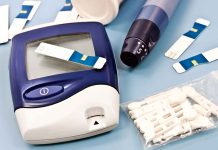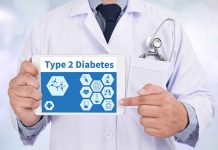
PTSD Is Treatable, You Just Need To Know Where To Look
(AscendHealthy.com) – Post traumatic stress disorder (PTSD) certainly affects the population well beyond soldiers who have been on the battlefield, though they certainly suffer more than their share of PTSD.
PTSD can affect anyone from the survivor of domestic violence, to those who have witnessed a mass shooting, to victims of childhood abuse, to people involved in a horrible vehicle crash. Many scenarios can create post traumatic stress disorder, which left untreated can eat away and affect nearly all aspects of a person’s life, from relationships, to substance abuse, to work issues, and more.
PTSD can be sparked by recent traumatic events, but it also can occur years after an event, manifested out of a subconscious that the affected person had managed to bury for that time.
Seeking treatment for PTSD
The Mayo Clinic notes there are four types of symptoms associated with PTSD: intrusive memories about the event(s), avoidance, negative changes in thinking or mood, and changes in physical and emotional reactions. Symptoms can range from mild to extreme, and Mayo recommends those who experience even mild symptoms for more than a month should get treatment, while those who experience extreme symptoms should get help immediately.
Treatment can range from inpatient treatment if the person is deemed to be a danger to themselves to outpatient treatment that can span from a few weeks to several months, depending upon the severity of the PTSD and the person’s response to treatment.
The American Psychological Association strongly recommends four types of cognitive behavioral therapy that can be conducted individually or in group therapy sessions. The benefits of cognitive behavioral therapy are to help the individual confront the traumatic events, gain a better understanding of their reactions and emotions, and learn to turn away from unhelpful or negative behaviors.
The association also offers a conditional recommendation for three other forms of psychotherapy and four medications. Medications may be able to provide more immediate relief from symptoms while the patient learns the skills to better cope with PTSD.
Where to seek treatment
Treatment for PTSD can be found through many resources, many of which can offer free or sliding-scale fees for those unable to afford treatment. The best place to start to get help is through a primary care doctor or mental health professional. Of course, in an emergency situation, a call to 911 or the national suicide prevention hotline (1-800-273-TALK) may be necessary. As of July 16, 2022, the federal government was rolling out a new 988 mental health crisis hotline, though state adoption has been spotty.
Military veterans, whether they served recently or decades ago, can receive PTSD treatment through Veterans Affairs. The VA offers PTSD counseling through all of its nearly 200 treatment centers across the country and offers inpatient treatment for severe PTSD at regional centers. The VA also offers counseling to family members of veterans experiencing PTSD.
For others, help generally is available through local or county mental health services. The National Institutes of Mental Health offers a comprehensive guide to places to see help with mental health issues, including PTSD. But finding help locally might be easier by going through your local, county, or state government mental health services website.
Domestic violence victims can find help for PTSD treatment through local domestic violence crisis shelters.
Many employer-provided health insurance plans also include benefits for mental health treatment. In such a case, the person should contact their insurance company to find a mental health services provider that is included in the health insurance program.
Local colleges, universities, and medical schools also might provide PTSD counseling services to their students and the broader community.
Copyright 2022, AscendHealthy.com




















